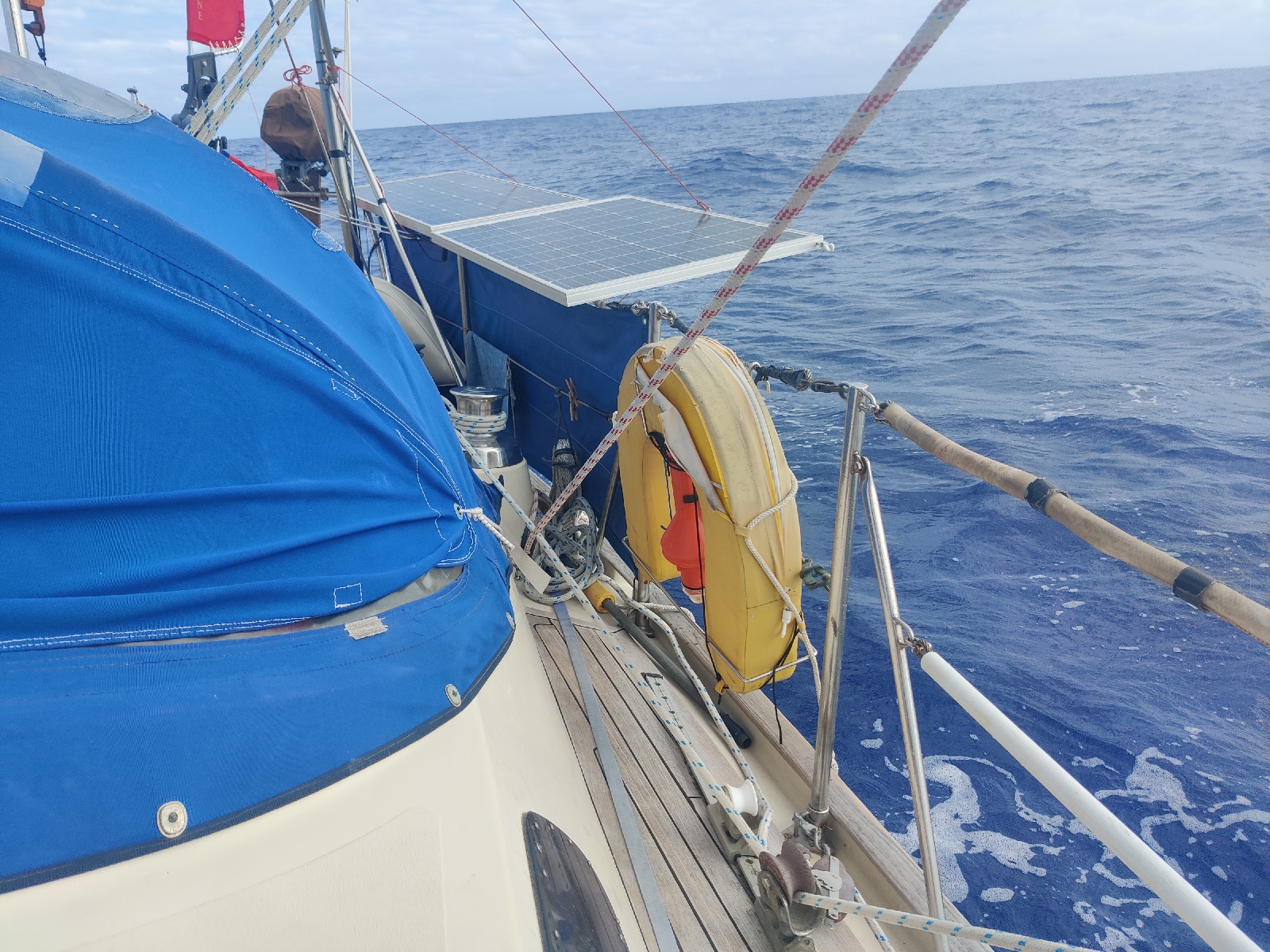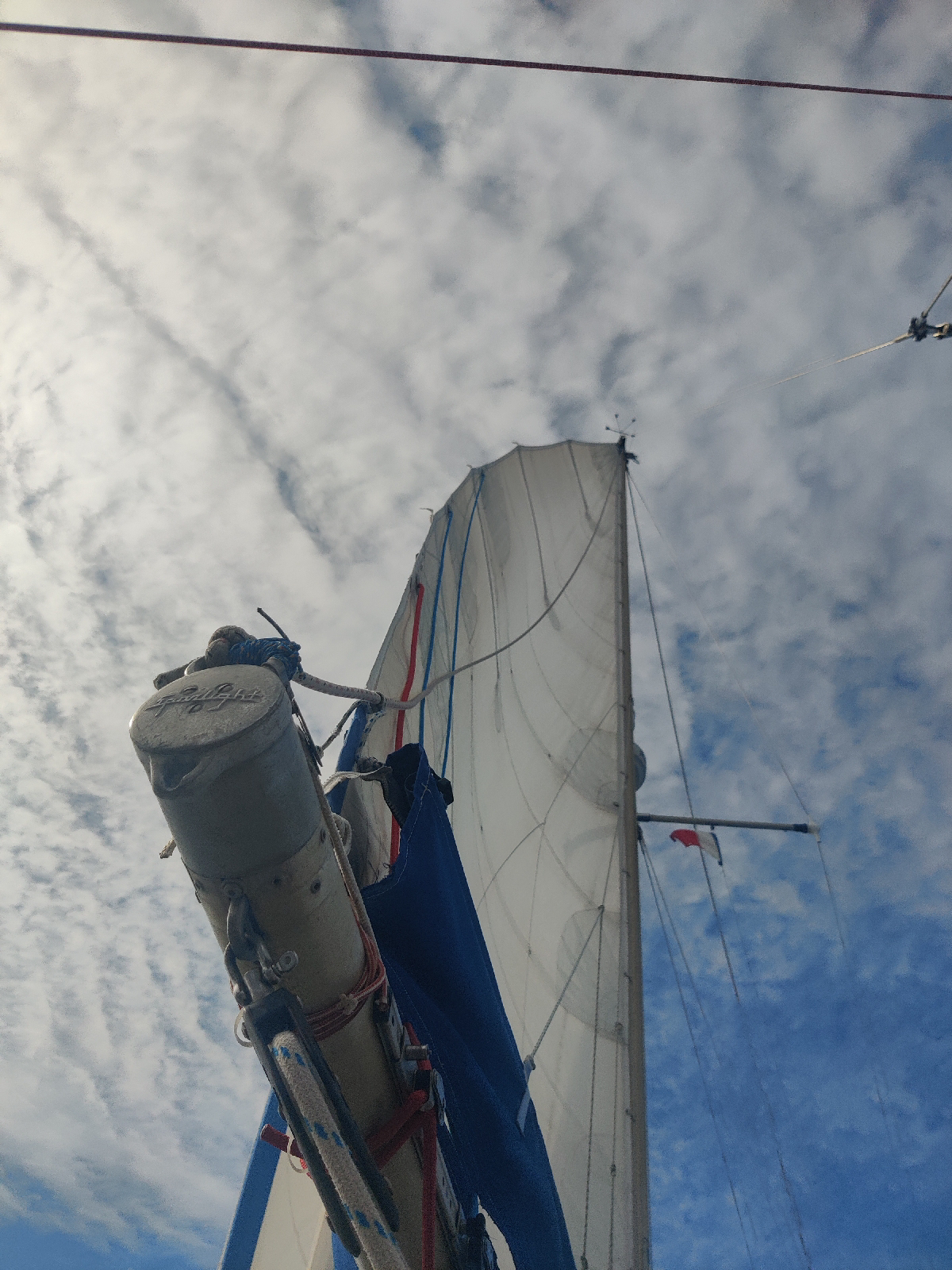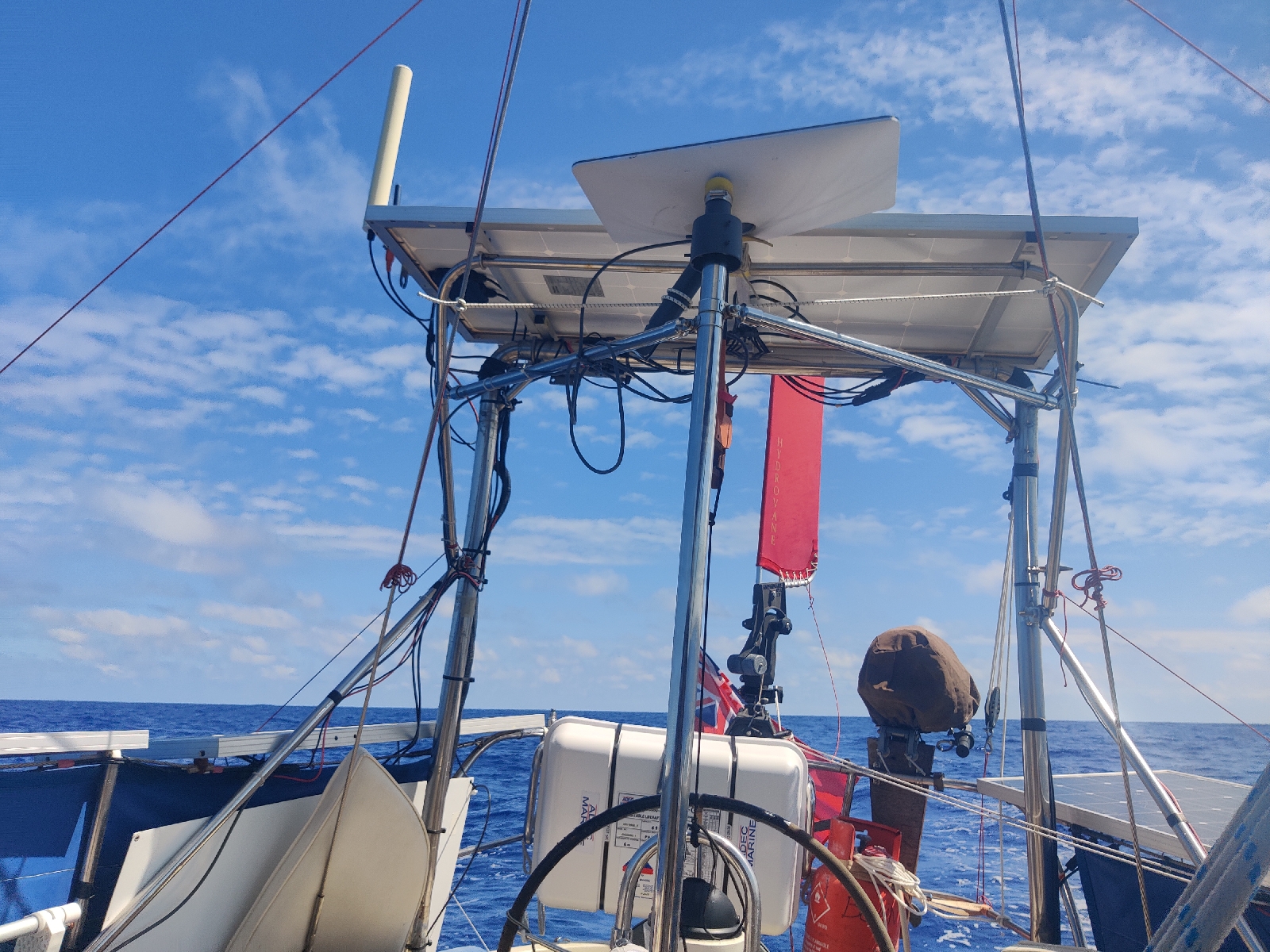As forecast the winds eased in the early hours of the morning (10/5/24). I had a surprisingly successful night of sleeping and waking every hour (until 0500 when I enjoyed the luxury of 2, 2 hour spells of sleep).
When I finally got up around 0900 I knew it was decision time, actually that was at about 0200 the previous morning, but I couldn't be bothered to do anything complicated like making decisions then. The decision was whether to alter course significantly to head north west in search of stronger winds or to carry on heading more or less directly for Bermuda in the now gentle breeze of about 10 knots (and due to ease further). A longer route with (eventually) stronger winds and therefore faster speeds, or a shorter route at slower speeds?
Just about the only certainy in the equation, was the distance to Bermuda, about 700 nautical miles. The weather system is not particularly stable at present and it is quite possible that a diversion to the north west may take much longer than expected to deliver the stronger winds. Conversely the winds between our present position and Bermuda could turn out to be lighter (or stronger). That I had any idea at all, was thanks to Starlink working pretty well and so I am getting up to date weather forecasts.
I decided to head NW and then an hour later, changed my mind and returned to the direct course to Bermuda. Going looking for wind would mean going slower until I found it because, with the wind just north of east the relative wind speed would be slower. A more northerly heading would increase the relative wind speed and therefore the boat's speed. We're talking about a small difference in the 5-10 knot wind speed range but that makes a 'big' difference to Bonny - maybe half a knot of boat speed in the 3-4 knot range.
Next challenge - more sail was needed, but Bonny is a sloop and only has one headsail. Ah but, what about trying the 'slutter' experiment again? Bonny has an emergency forestay, the bottom of which can be attached to an eye on the foredeck (the top is fastened permanently to near the top of the mast - I hope) and this can be used to attach a second headsail. I had one and Mick and I had tried it without much success once before - it simply got backed by the genoa and achieved nothing, but I thought it would be worth trying again. Perhaps the wind angle was different this time. Anyway, it would get me off my backside.
So began a couple of hours of playing around with bits of wire and string to try the idea out.
To my surprise it seemed to work pretty well.
The photo above shows the theory in action, now there are two 'slots' rather than one. One between the mainsail and the added staysail and the other between the staysail and genoa. The slots produce 'lift' and help pull the boat forward.
I managed to find a better position for the deck sheet block - further inboard than before....
... it's where the red and white line attaches to the deck. Previously it went through the white 'car' further forward and further out.
The dail is also sheeted inside the mainmast's upper stay rather than outside. These two changes have increased the space between the outside of the temporary sail and the inside of the genoa and provide just a big enough slot for both sails to fill....
It's not perfect but I'm pretty sure it's helping.
By the way, for those unfamiliar with sailing vocabulary, the term "Slutter" is a curruption of "Cutter". A cutter is a sailing boat with two headsails attached to two permanent forestays. A "slutter" is the term for the rig described above. Quite why, I'm not certain.
I also 'rigged' one of the spinnaker booms down the middle of the foredeck to provide something extra to hold onto. Not particularly necessary in the present conditions, but will be useful in more boisterous weather - which is when I'll need to douse the extra jib.
I also made a further refinement to the rig for light wind sailing and moved the mainsheet car up to windward to increase the curvature of the mainsail. This increases the power produced by the sail. At least that's what the books say!
I'm pretty sure these refinements are having a postive effect because we're making about 3.5 knots in about 7 knots of wind, which is as good as I think Bonny has ever done!
By the way, I have my good friend Bernie Branfield to thank for suggesting the slutter and spinnaker boom refinements.
We passed our second 100 mile waypoint earlier this afternoon and at the time of writing (1540, 10/5/24) we have 640 miles to run!
A further innovation has been to the attachment of the Starlink dish. I've positioned it so that it's more or less horizontal.
This has improved it's view of the sky and got rid of minor obstructions caused by the back stays. This has got connection times down to 20 minutes. It is of course very calm weather at present and it's unlikely to be so good in rougher weather.











No comments:
Post a Comment